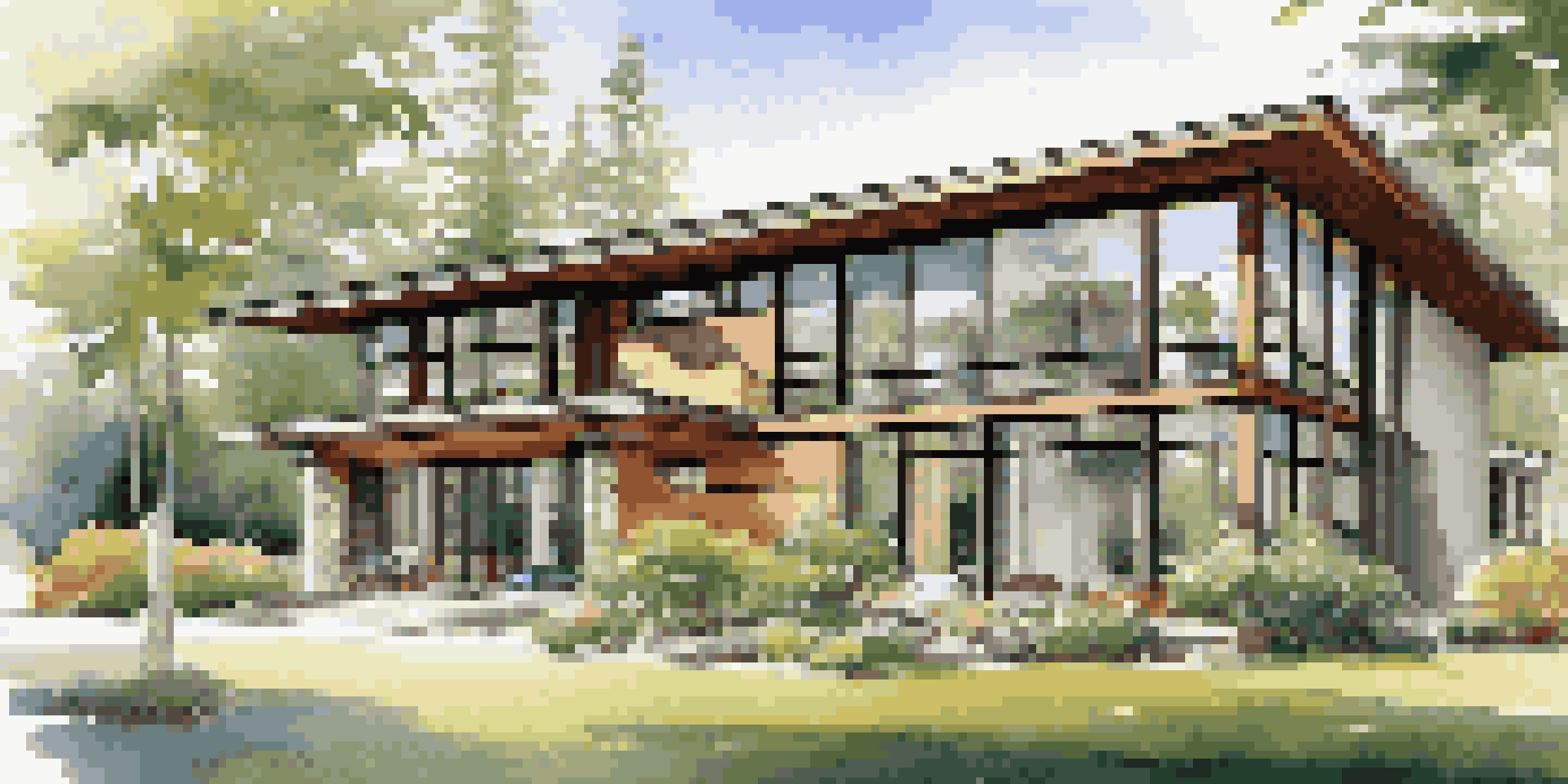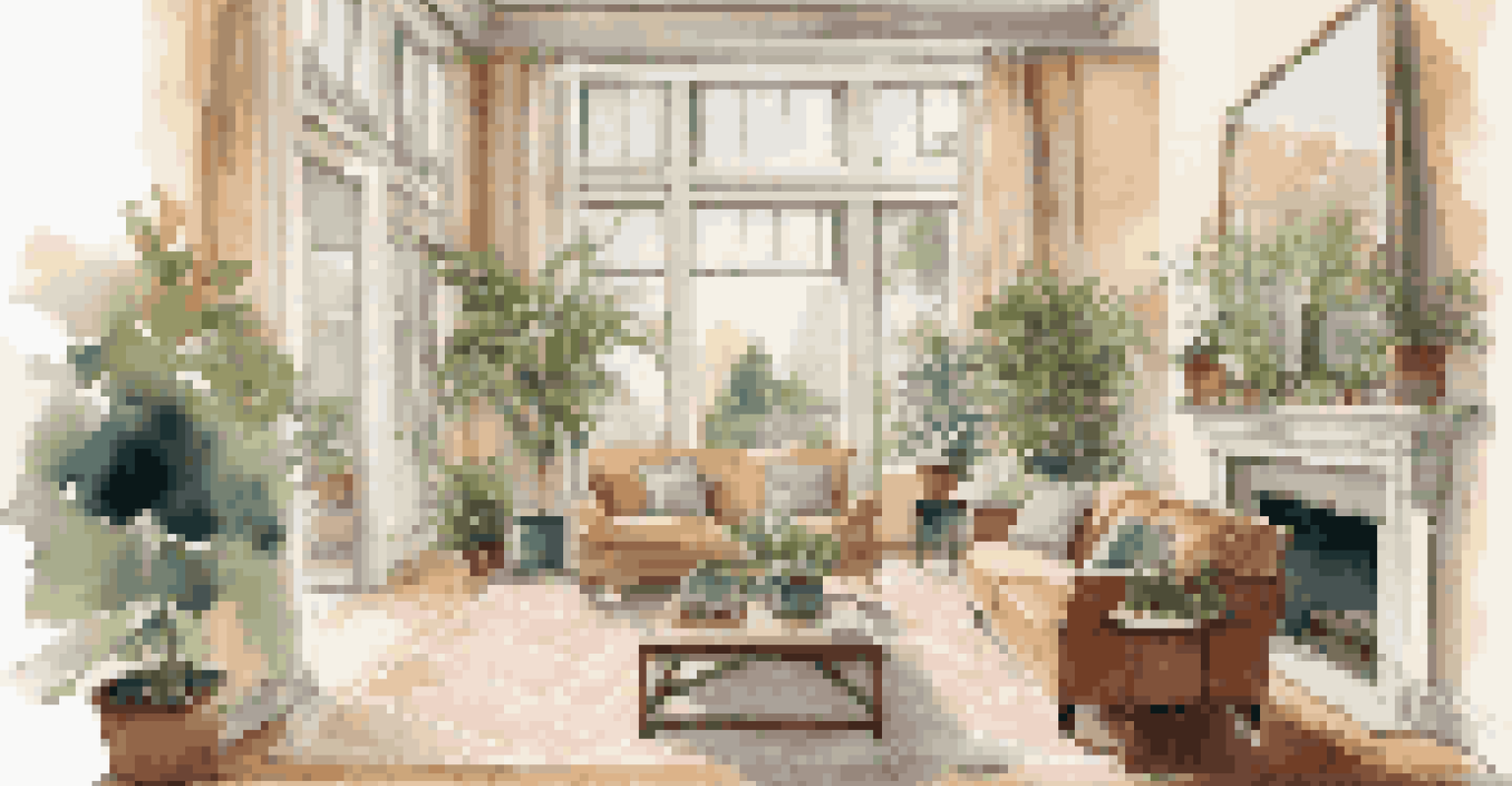Designing Homes with Focus on Natural Ventilation and Airflow

Understanding the Importance of Natural Ventilation
Natural ventilation is essential for maintaining a healthy indoor environment. It allows fresh air to circulate while removing stale air, which can significantly enhance air quality. When designing a home, integrating natural airflow can lead to reduced reliance on mechanical systems, ultimately saving energy and lowering utility bills.
In every walk with nature one receives far more than he seeks.
Imagine walking into a room that feels fresh and invigorating, free from musty odors. This feeling is a direct result of effective natural ventilation, which promotes a comfortable living space. By harnessing the natural movement of air, homeowners can enjoy a more pleasant atmosphere throughout their homes.
Additionally, good ventilation contributes to the longevity of the home structure by preventing moisture buildup, which can lead to mold and structural damage. This proactive approach not only benefits the inhabitants but also protects the investment in the property.
Key Principles of Natural Airflow Design
To effectively design for natural ventilation, it’s crucial to understand the principles of airflow. Air naturally moves from areas of high pressure to low pressure; by strategically placing windows and vents, you can create pathways for this flow. For instance, placing larger openings on the windward side of the house allows fresh air to enter, while smaller openings on the leeward side can help exhaust stale air.

Another principle to consider is the stack effect, which occurs when warm air rises and creates a vacuum that pulls in cooler air from below. This can be particularly effective in multi-story homes, where upper-level windows can be opened to release hot air as cooler air enters from lower levels. Designing with these principles in mind can significantly enhance the natural airflow within the home.
Natural Ventilation Enhances Air Quality
Effective natural ventilation improves indoor air quality by allowing fresh air to circulate and removes stale air.
Incorporating features like atriums or open staircases can also facilitate this effect, making your home not only more energy-efficient but also more enjoyable to live in. By focusing on these design principles, you’ll create a home that breathes easily and feels comfortable year-round.
Selecting the Right Windows for Ventilation
Windows play a pivotal role in natural ventilation, so selecting the right type is essential. Casement windows, for example, can be opened fully to capture breezes, while sliding windows allow for flexible airflow control. Adding operable skylights can also enhance ventilation, especially in areas with limited wall space.
The greatest threat to our planet is the belief that someone else will save it.
Consider the orientation of your windows as well; south-facing windows can maximize sunlight in colder months, while shaded windows can keep spaces cooler in summer. Positioning windows across from each other can create a cross-ventilation effect, allowing air to flow through the house, effectively cooling it down.
Incorporating screens can help keep bugs out while allowing fresh air in. This balance between function and comfort is key; by choosing the right windows, you can enhance not just airflow but also the overall aesthetic and functionality of your home.
Incorporating Architectural Features for Airflow
Architectural features can enhance natural ventilation in creative ways. Open floor plans, for instance, allow air to circulate freely between rooms, minimizing stagnant areas. High ceilings can also facilitate the stack effect, encouraging warm air to rise and exit through upper openings.
Consider installing transom windows above doors or incorporating clerestory windows that allow light and air to flow without compromising privacy. Using materials like glass walls or large sliding doors can create a seamless connection to the outdoors, inviting fresh air in.
Design Principles for Airflow
Understanding airflow principles, such as pressure differences and the stack effect, is essential for creating effective natural ventilation in homes.
Ultimately, the goal is to create a harmonious relationship between your home and its environment. Thoughtfully designed architectural features not only enhance airflow but also improve the overall aesthetic appeal of the space.
Landscaping Considerations for Enhanced Airflow
Landscaping can significantly impact the airflow around your home. Strategically placed trees and shrubs can create windbreaks or direct breezes toward your windows for improved ventilation. However, it’s essential to ensure that landscaping doesn’t completely obstruct airflow; a balanced approach is necessary.
For example, planting deciduous trees on the south side of your home can provide shade during hot months while allowing sunlight to warm the space in winter. Ground cover plants can also aid in cooling the area around the foundation, contributing to a more comfortable indoor climate.
By being mindful of your landscaping choices, you can work with nature to enhance the ventilation and overall comfort of your home. A well-planned landscape not only looks beautiful but also contributes to the home's functionality.
Utilizing Passive Cooling Techniques
Passive cooling techniques can complement natural ventilation efforts, providing additional comfort without relying on mechanical systems. Techniques such as thermal mass—using materials that absorb and store heat—can help regulate indoor temperatures. For example, concrete or stone can retain coolness during the day and release it at night.
Incorporating overhangs or awnings can provide shade and reduce heat gain, allowing the home to stay cooler in the warmer months. Additionally, employing reflective roofing materials can minimize heat absorption, creating a more comfortable living environment.
Landscaping Impacts Airflow
Strategically designed landscaping can enhance airflow around your home, improving ventilation while maintaining aesthetic appeal.
These strategies work hand-in-hand with natural ventilation, creating a harmonious balance between comfort and energy efficiency. By embracing passive cooling techniques, you can enhance your home's livability while reducing your carbon footprint.
Maintaining Your Natural Ventilation System
Once you’ve designed your home for optimal natural ventilation, maintaining that system is crucial for it to function effectively. Regularly cleaning windows and vents ensures that air can flow freely and any obstructions are removed. It’s also important to check for any structural changes that may impede airflow, such as new landscaping growth.
Consider creating a maintenance schedule to inspect and clean these areas periodically. This proactive approach can help identify potential issues before they become significant problems, ensuring your home remains comfortable and energy-efficient.

Taking these simple steps can help you enjoy the benefits of natural ventilation for years to come, making your home a healthier and more enjoyable place to live.